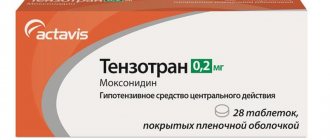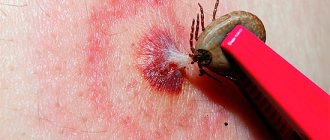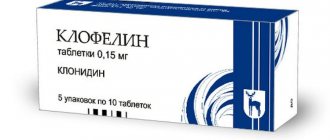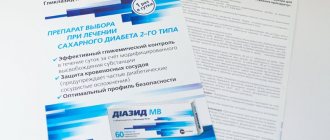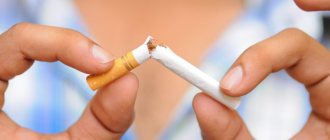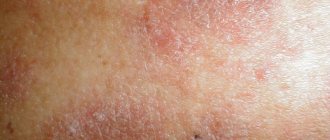Home » Health » What is dangerous about high blood pressure in humans: signs and how to reduce it at home
High blood pressure (BP) is an excess of the generally accepted norm of 120/80 mm. Hg Art.
However, most often this norm is individual, and its change is felt by the person independently, without measurement with a tonometer.
If there are people in your family who suffer from high blood pressure, it is important to learn how to promptly reduce it at home.
Delay is dangerous, and timely first aid will allow you to stop the disease at the first sign.
Signs of high blood pressure and its threat to health
In a healthy person, 15-20 minutes after exercise, the pressure drops to normal values. If the elasticity of the vessels is reduced, or the lumen is clogged with cholesterol deposits, restoring blood flow is very difficult. The dangers of high blood pressure are as follows:
- The supply of blood to tissues and organs decreases, they experience a deficiency of oxygen and nutrients.
- With a critical increase in blood pressure, not only capillaries, but also arteries can burst: if this happens in the brain, paralysis, disruption of higher nervous activity, and even death are possible.
- The blood thickens and there is a tendency to thrombosis. If a blood clot blocks the narrowed lumen, cell death in the tissue occurs due to the cessation of oxygen supply.
People often ask: how to determine that blood pressure is increased (considering that normative values are often individual)? The main evidence is headache, pulsation in the temporal part. However, there are other characteristic symptoms of high blood pressure.
Feeling overtired
This is a neurotic syndrome reminiscent of a condition after physical labor or during a mild cold. A person becomes irritable, it is difficult for him to concentrate, he constantly wants to sleep during the day and cannot fall asleep at night, and redness of the eyeballs is often observed. The listed manifestations seem harmless to many, but they signal the initial degree of hypertension. In an adult, a similar condition usually occurs when blood pressure is 140/90, and in a child – already at 120/85 mm Hg. Art.
Headache
If the disease continues to worsen, the blood vessels begin to suffer from excess stress. First of all, cerebral circulation disorders appear, so hypertensive patients suffer from attacks of aching or squeezing headaches. In parallel, when checking the fundus at this stage, atrophic changes in the retina are diagnosed, indicating an increase in intraocular pressure. Similar symptoms of hypertension in combination with tonometer readings of 160/100 units. in adults or 130/100 in children are grounds for an urgent visit to a cardiologist and prescription of blood pressure medications.
Heartache
A person feels heaviness in the chest area, the heart begins to “ache,” tachycardia and arrhythmia appear. Sometimes painful “shots” radiate to the left arm. The described symptoms indicate that a systematic increase in blood pressure has led to pathological changes in the coronary vessels and heart muscle.
Hypertensive crisis
This combined syndrome is characteristic of stages 2-3 of hypertensive disease; it occurs when there is a sharp increase in pressure in the direction of increase. There are disturbances in the functioning of the heart, the pulse quickens, the body temperature rises, swelling appears, the limbs go numb, nausea and vomiting begin, and fainting is possible. If urgent measures are not taken, the patient faces death.
Important: External signs of a hypertensive crisis (HC) may include redness of the face, general overexcitement, increased sweating (sweat on the forehead), a feeling of lack of air, and shortness of breath. . Intracranial pressure
Intracranial pressure
The normative value of the pressure force of cerebrospinal fluid on brain tissue is 10-17 mm Hg. Art. With various pathologies of cerebral circulation, inflammatory processes, injuries, and intoxication, ICP increases. The symptoms of its rise are:
- intense pain of a pressing, pulsating and bursting nature, felt during rising after a night's sleep (localization area - temples, frontal and occipital parts);
- pain attacks in the neck area;
- nausea, vomiting;
- swelling around the eyes;
- blood pressure surges;
- rarefied pulse;
- deterioration of memory, concentration, and mental functions;
- “tunnel” vision, fog in the eyes, unclear contours of the image.
Reduced visual acuity with high intracranial pressure can lead to blindness.
Important: Specific signs of increased VD in infants are disproportionately rapid growth of the head, a convex fontanel, and the appearance of strabismus. In preschool and adolescence, headaches, fatigue, lethargy, increased reaction to bright light, and possibly strabismus are noted.
Blood pressure measurement
(c) Flickr/NIHClinicalCenter
The heart muscles constantly pump blood out every second. Blood that has low oxygen levels flows towards the lungs, where oxygen reserves are replenished. Oxygen-rich blood is pumped by the heart throughout the body to deliver it to muscles and organ cells. Pumping blood creates pressure—blood pressure.
When we measure blood pressure, we measure two types of pressure:
Systolic pressure
- blood pressure when the heart contracts, namely at the moment of maximum compression force.
Diastolic pressure
- blood pressure between heartbeats when the heart muscle is relaxed.
The first numbers indicate the systolic pressure, and the subsequent lower numbers indicate the diastolic pressure. Abbreviation “mm Hg.” means "millimeters of mercury".
Signs of high blood pressure
It is best for everyone to have a reliable pressure measuring device at home at all times. This recommendation is especially important for those over 40 years old. This way you can constantly monitor your blood pressure and quickly respond to high readings.
Besides this, there are other ways to find out that something is wrong in your body: you just need to pay attention to certain symptoms in time.
Doctors divided all the signs that a person feels with high blood pressure into three groups - neurotic, vegetative and fluid retention.
The first group includes:
- Increased fatigue.
- Dark spots before the eyes.
- Irritability.
- Dizziness.
- Severe pain in the back of the head.
- Noise in ears.
- Insomnia.
The appearance of these signs indicates the development of hypertension. In this case, you should measure blood pressure every day .
Symptoms and complications of hypertension
Vegetative signs appear:
- The appearance of redness on the face.
- Feeling of heaviness in the heart area.
- Increased sweating.
- Anxiety.
- Feeling of pulsation in the temples.
- Heartbeat disturbance.
These symptoms need to be responded to immediately, because they indicate a large jump in adrenaline in the blood. Thus, the body reacts to overexertion or strong experiences. These sensations may be a precursor to a hypertensive crisis.
The third type of symptoms is fluid retention, which can be recognized if :
- was detected .
- There was a tingling feeling.
- The feeling of numbness throughout the body haunts me
These symptoms indicate that a lot of fluid has entered the body, which does not have time to be eliminated from the body at a normal pace . Because of this, high pressure is felt in the blood vessels. In this case, doctors prescribe diuretics .
Useful video:
How does high blood pressure manifest in the elderly?
In old age, with high blood pressure, almost all of the above symptoms appear. This is a sign of wear and tear on the body.
The most common symptoms are headaches and dizziness. These symptoms are quite difficult for older people to overcome, but as soon as you get a little nervous, they begin to bother you again. Blood pressure reacts immediately to stress.
In addition, high blood pressure can be accompanied by chest pain, rapid heartbeat, and nausea.
In the presence of other serious diseases, these symptoms may appear even with the slightest surge in pressure.
Symptoms of hypertension in young and middle-aged people
If previously it was believed that high blood pressure was a disease of older people, now it is often found among young people.
In this age-old group, it arises due to improper lifestyle:
- Lack of sleep.
- Eating fast food.
- Working in an office, sitting for many hours at a desk in front of a computer.
- Excess weight.
- Experiments with drugs and nicotine, etc.
As a result, a person at 25 years old can suffer from high blood pressure just as painfully as a pensioner.
Symptoms of hypertensive crisis
Hypertensive crisis is a critical condition of the body.
A person feels all the most dangerous symptoms, namely:
- Cardiopalmus.
- Nausea.
- Dizziness.
- Aching pain in the heart area.
- Trembling throughout the body.
- Redness of the skin on the face.
In this case, you need urgent help from specialists. You should not try to eliminate such an attack on your own. In order not to risk your life and avoid such situations, you need to regularly check your blood pressure.
What to do if there is a sharp increase in blood pressure?
If your blood pressure has risen sharply, you first need to try to calm down, you can take sedatives.
First aid for hypertension
Next, you need to move the body to the correct position, do not lie down in a horizontal position, so that the blood does not flow to the head. This will help prevent stroke or hemorrhage.
If you have previously been prescribed antihypertensive medications, take them without increasing the dose so as not to lower your blood pressure too much. Usually in such cases they take anaprilin, clonidine, verapamil.
When the pressure jumped to 170 mm Hg. Art. and continues to hold on, without hesitation, call an ambulance .
Three diseases that cause hypertension
It is generally accepted that hypertension is directly related to heart and vascular disease. And it is right. But there are three diseases that can have high blood pressure as a symptom and are in no way related to the heart. Some of them have already been mentioned above, but I would like to highlight them again more clearly. These are the diseases:
- adrenal tumor
- hyperthyroidism
- narrowing of the renal artery
1. Tumor of the adrenal glands. The first disease that causes catastrophically high pressure surges is adrenal tumor . The tumor produces hormones that we produce only under stress. And here she produces them constantly and in large quantities. The result is constant crises, while the heart and blood vessels are normal.
This is important to know, as it is often observed in young people. They have constant high upper blood pressure. During an attack, the pressure soars to 200-220 mm
Possible tachycardia. Heart rhythm disturbances up to myocardial infarction.
With such a picture, it is necessary to undergo an ultrasound examination, computed tomography, collect daily urine and check for the presence of stress hormones in it - catecholamines . Treatment is surgical removal of the tumor, which will immediately lead to normalization of blood pressure.
2. Hyperthyroidism. The second disease is associated with a functional malfunction of the thyroid gland. With hyperthyroidism, the gland begins to secrete a huge amount of hormones that stimulate the cardiovascular system. The release of blood increases due to the fact that the heart beats faster. The vessels do not dilate enough, and this leads to an increase in systolic (upper) pressure. It is necessary to undergo an ultrasound of the thyroid gland and check the presence of hormones in the blood.
3. Narrowing of the renal artery. The third disease is narrowing of the renal artery leading to hypertension in young people. Much less blood enters the kidney; it begins to produce substances that retain fluid and increase blood pressure. This type of hypertension is difficult to treat with medications.
The narrowing of the renal artery can be determined by ultrasound, then angiography is performed - a contrast X-ray method for examining the location of the narrowing of the artery. After this, a stand is used - dilation of the affected renal artery to normal diameter using a thin tube.
It is carefully inserted through a puncture in the thigh and approached to the affected artery. At the site of narrowing, the artery is inflated with a special balloon to its normal state.
The kidney receives sufficient blood supply and the pressure normalizes.
Content:
- Why is hypertension dangerous?
- High blood pressure: causes
- Secondary hypertension
- Why does high blood pressure occur in a child?
- Brief conclusions
Hypertension is a leading risk factor for cardiovascular and cerebrovascular disorders. It is characterized by a persistent increase in blood pressure to 140/90 or more. It can occur at any age, but is more often diagnosed after 35-40 years. Found in 40% of people in the older age group. Of these, 58% are men, 42% of patients are women.
Therapy methods
Any form of hypertension must be treated. Lack of therapy provokes irreversible changes in all body systems. If a person’s blood pressure often rises, the treatment regimen is determined by the attending physician, based on the patient’s medical history and the presence of risk factors. Drug treatment includes taking drugs from the following pharmacological groups:
- Diuretics. Designed to remove excess fluid in the body.
- ACE inhibitors. Reduce the production of hormones that contribute to vasoconstriction.
- Beta blockers. Normalizes heart rate.
- Calcium antagonists. Helps relax blood vessels and stabilize blood pressure.
- Angiotensin-2 antagonists. They are an analogue of ACE inhibitors and act on a similar principle.
IMPORTANT!
To eliminate the symptoms of high blood pressure in women and men, they take drugs such as Sulfonamide, Carvedilol, Captopril. Sulfonamide is a strong diuretic that is used for resistant forms of hypertension. It is taken for diabetes mellitus, as it affects blood glucose levels. Sulfonamide is excreted by the liver and kidneys without accumulating in the body. Included in the pharmaceutical preparations Ravel SR, Acripamide, Ionic.
Contraindications: lactose intolerance, low potassium levels in the blood, acute renal and liver failure, pregnancy and breastfeeding. Side effects: urticaria, abdominal pain, nausea, vomiting, diarrhea, runny nose, dizziness, nervous disorders and heart rhythm disturbances.
Other medications
The drug Carvedilol blocks beta and alpha1 receptors, affecting lipid metabolism, the level of potassium, sodium and magnesium compounds in the blood plasma. Contraindications for use: obstructive pulmonary diseases, liver failure, bradycardia, sinus node syndrome, pulmonary hypertension.
Captopril belongs to the group of ACE inhibitors, intended to combat hypertensive crisis. It is not recommended for elderly patients diagnosed with cerebral atherosclerosis. Contraindications:
- pregnancy;
- lactation;
- age restrictions (from 18 years);
- kidney transplant;
- circulatory disorders;
- cerebral ischemia;
- diabetes;
- autoimmune diseases.
The drug Amlodipine is a calcium blocker that increases exercise tolerance. Eliminates the need to use diuretics. Indicated for elderly patients (with cerebral atherosclerosis and angina pectoris). Contraindications: pregnancy, age restrictions. Not recommended for use in case of liver failure.
ethnoscience
If you have high blood pressure, you can take folk remedies after consulting with your therapist. Tincture of fir cones helps restore the walls of blood vessels and reduce the risk of blood clots. Tannin and bioflavonoids, which are part of red pine cones, stop the clumping of blood cells, having a blood-thinning effect.
Flaxseeds are enriched with omega 3 acids, so they reduce cholesterol levels by restoring blood vessels. Garlic prevents the formation of atherosclerotic plaques, quickly stabilizing blood pressure.
Along with medication and alternative treatment, it is recommended:
- give up bad habits (smoking, alcohol abuse, sweet, salty or fatty foods);
- Maintain a balance between physical and intellectual activity; regular exercise has a positive effect on the condition of blood vessels.
Particular attention is paid to the diet, from which foods that increase blood pressure are excluded:
- By-products - liver, brains.
- Smoked, salted, hot and spicy dishes.
- Fatty fish or meat.
- Whole dairy products and hard cheeses.
- Confectionery and sweet bakery products.
Features of manifestation in women
Characteristic signs of high blood pressure in women are usually associated with their emotionality. Most often, a pathological increase in blood pressure is accompanied by:
- redness of the facial skin;
- noticeable increase in heart rate;
- the appearance of anxiety;
- weakness;
- pressing headache in the back of the head;
- dizziness;
- noise sensation in the ears.
With a significant increase in pressure, angina pectoris is possible. Weakness may be followed by nausea or vomiting. Anxiety causes a panic attack. Sometimes there is tremors in the limbs. The lady is suffering from shortness of breath. A constant increase in blood pressure leads to swelling of the face. Edema is a sign of stage 2 hypertension. With such a symptom, you need to consult a doctor as soon as possible.
Important! In chronic hypertension, signs of increased blood pressure are weakly expressed. Therefore, you need to measure your blood pressure daily.
Complications of hypertension
Increased eye pressure, causes and symptoms
People with problematic cardiovascular systems and hereditary predisposition most often suffer from this pathology. Main reasons:
- poor psycho-emotional background, excitability
- excessive eye strain
- high blood pressure
- chronic kidney disease
- cardiovascular pathologies
- thyroid disease
The peculiarity of the pathology is the complete absence of symptoms. Only an ophthalmologist can detect the disease. As the disease progresses, a person develops the following symptoms:
- migraine, constant pain in the eyes, heaviness, fatigue, pain in the temples
- sharp decrease in vision, blurred vision, spots
- loss of vision at dusk, peripheral vision, visual field
If symptoms appear, the causes of this condition should be eliminated. And seek help from a doctor. In the early stages, this includes eye exercises, eye drops to drain fluid, and wearing special glasses. Next, complex treatment is carried out. If drug treatment is ineffective, laser treatment or microsurgical treatment is used.
The danger of increased eye pressure is the occurrence of glaucoma, death of the optic nerve, blindness.
Noise in ears
A person may experience a sudden ringing or dull noise in the ears. As a rule, it appears on both sides. The sound of your own pulse may also increase in your ears.
In addition to these main and most common symptoms, hypertension may cause:
- · Arrhythmia (heart rhythm failure, often towards tachycardia).
- · Nausea.
- · Darkening, spots in the eyes.
- · Feelings of anxiety, fear, panic.
- · Swelling, especially of the lower extremities.
In some cases, hypertension does not produce any obvious symptoms for a long time and a person may not suspect that he has high blood pressure.
But if you still have some symptoms, you shouldn’t hesitate. You should try to find an opportunity to measure your blood pressure with a tonometer as soon as possible. If the condition worsens, you need to call an ambulance.
Source
Periodic increase in pressure
If elevated blood pressure is periodically recorded in a patient, this may be a manifestation of one of the following conditions:
- cardiopsychoneurosis;
- mild degree of hypertension (not a stage!).
In these cases, it is necessary to modify your lifestyle: avoid stress and excessive loads, engage in regular aerobic exercise, give up cigarettes and alcohol, consume less salt (at least do not add salt to the food on your plate and do not eat canned food, smoked meats and other salty foods). At the same time, it is recommended to monitor blood pressure independently using a tonometer at least once a week, and preferably more often. Additionally, you can take herbal sedatives, for example, motherwort.
If blood pressure has not returned to normal within a month, you should consult a physician and undergo an examination. It should include an electrocardiogram, preferably 24-hour blood pressure monitoring; blood and urine tests, including biochemical tests, examination by a neurologist and ophthalmologist (to detect vascular changes in the fundus).
If it is already known that the patient has hypertension, but the pressure still rises, it is necessary to select a combination of medications that will keep it at the desired level.
What to do with high blood pressure in case of hypertensive crisis? First of all, ensure physical and mental rest for the patient. You can take a sedative, as well as one of the medications that can quickly lower blood pressure (captopril, nifedipine or others). You should ask your doctor in advance about which drug to take in this case.
If there is no effect within an hour or the condition worsens, you should contact an ambulance.
If blood pressure has risen in a pregnant woman, but it is below the numbers that indicate preeclampsia, this is probably a sign of OPG-preeclampsia . This is a complication of the second half of pregnancy, accompanied by edema, protein excretion in the urine and hypertension. OPG gestosis often requires hospital treatment. Self-medication is unacceptable, since many drugs for lowering blood pressure during pregnancy are contraindicated.
Normal blood pressure indicators
Blood pressure readings are indicated as follows: 120/80. It reads "120 to 80". The top number is called systolic, and the bottom number is called diastolic. Blood pressure ranges:
- optimal: less than 120 and less than 80;
- normal: 120-129 and/or 80-84;
- high normal: 130-139 and/or 85-89;
- arterial hypertension 1 degree: 140-159 and/or 90-99;
- arterial hypertension 2 degrees: 160-179 and/or 100-109;
- arterial hypertension 3 degrees: more than 180 and/or more than 110;
- isolated systolic hypertension: greater than or equal to 140 and less than 90.
If your results are higher than normal, talk to your doctor about how to properly lower them.
Risk groups for high blood pressure. How to protect yourself from hypertension
The first risk group is people with increased weight . There is an interesting connection between waist size and hypertension. For women, the waist should be 88 cm or less, for men - 94 cm or less. If your waist size is larger, your blood pressure increases.
When you lose weight, your blood pressure will also decrease, and without the use of drugs - up to 20 units. If you do not bring your weight back to normal, there is an almost 100% chance of death from a stroke or heart attack.
2. The second risk group is people who eat salt . Salt retains fluid in the body and prevents its elimination. Once in the blood vessels, salt increases the volume of blood in the body, which causes hypertension. Limiting salt intake reduces blood pressure by 5-7 mmHg.
In all international protocols, in all official recommendations for hypertensive patients, salt abolition is the first dietary recommendation. Moreover, by adhering to this recommendation, you can lose weight from 6 to 12 kg - just by eliminating salt. Overweight people who consume salt have a lot of excess fluid in their bodies.
The only thing: I am against eliminating salt consumption completely, but reducing it to a minimum is normal.
Physiological reasons
Why does blood pressure rise? There is no clear answer to this question. But we can say for sure that hypertension can be primary (essential) and secondary. Sometimes it is difficult to distinguish between these two subtypes; this requires a full diagnostic examination.
Primary hypertension is an increase in pressure that is associated with a pathological condition of the vascular system. It is provoked by certain factors or a combination of them. But they can only increase the likelihood of developing the disease, but do not cause it directly. This
- aging of the body;
- presence of the disease in close relatives;
- completeness;
- physical inactivity;
- poor nutrition;
- abuse of tobacco products and alcoholic beverages;
- taking certain medications and dietary supplements;
- bad ecology;
- excessive physical activity;
- weather.
Blood pressure can rise as the body ages. Age-related changes in blood vessels include thickening of their walls, loss of elasticity, and narrowing of the lumen between the walls. For the same reason, blood vessels can become thin and brittle. Calcium salts and lipids accumulate inside them, the muscle layer atrophies, and collagen production decreases.
Hereditary predisposition is a common cause of persistent high blood pressure.
Many hypertensive patients have close relatives with similar problems. But the disease occurs only with a combination of other harmful factors. If a person leads a healthy lifestyle and is attentive to himself and his health, he is not afraid of hypertension, even with poor heredity.
Overweight people often have high blood pressure. In order to supply blood to the body tissues that have increased in size, the heart has to work harder, and in response to this, the vessels constantly narrow and the pressure increases. In addition, fat deposits compress the vascular walls, narrowing the passage for blood flow, which leads to increased blood pressure.
Excess weight is closely related to the next negative factor for blood vessels – physical inactivity. Overweight people are inactive, and vice versa, the lack of moderate physical activity leads to obesity.
When a person moves little, blood circulates poorly and stagnates in individual organs, while other parts of the body do not receive enough oxygen and nutrients. Uneven distribution of blood in the body leads to deformation of blood vessels, they lose the ability to self-regulate, the tone of the walls weakens, and the pressure on them begins to increase.
Nutrition plays a huge role in the development of persistent high blood pressure. What you should not eat if you have hypertension (or should be significantly limited):
- Confectionery products, sweets, baked goods, they contain a lot of sugar and fat.
- Fatty meats, sausages, minced meat, lard, fatty broth, internal organs.
- Products made from cocoa beans (chocolate, candies, creams, pastes).
- Salt and products containing it in large quantities; it retains fluid in the blood, increasing its amount, which increases blood pressure, excites the nervous system, and adrenaline begins to be produced, which constricts blood vessels.
- Smoked meats, canned food, hot spices, spices, their effect is similar to the effect of salt.
Drinks that are not recommended:
- coffee;
- cocoa;
- alcohol-containing (beer, fortified wines);
- carbonated and energy drinks;
- strong tea.
These drinks stimulate the nervous system, which promotes the release of adrenaline and constriction of blood vessels, and, therefore, an increase in blood pressure.
Alcohol and nicotine affect the circulatory system. These are the most common causes of high blood pressure in men. These factors excite the central nervous system, inhibiting inhibition processes in the body, which leads to frequent and sharp spasms of the walls of blood vessels (they either narrow or expand), and the number of heart contractions increases. The pressure begins to “jump”, hypertensive crises are possible.
The toxins contained in nicotine destroy the inner lining of blood vessels (they become thin and brittle), creating favorable conditions for the deposition of cholesterol plaques.
High blood pressure occurs when using a certain group of drugs that have side effects of this kind. You should take oral contraceptives and anti-inflammatory drugs from the group of non-steroidal and glucocorticosteroids with caution.
Bad ecology means polluted air and water, fruits and vegetables that are saturated with harmful substances. Toxins can even enter the body from children's toys. This factor is another reason for increased pressure.
Cadmium is a toxic microelement; when it enters human organs from the environment, it and its compounds pose a health threat. It should be present in small doses, but significantly exceeding the permissible limit can cause severe poisoning and death. The element accumulates in the body and provokes the development of various diseases, including hypertension.
Biphenyl is a food preservative (E230) that can cause cancer; the toxins in its composition can have a bad effect on the kidneys, liver, heart, blood vessels, and nervous system, hence the development of hypertension. It is produced from processed petroleum products. Diphenyl cannot be found in domestically produced food products, because its use is prohibited in Russia.
But imported foreign fruits and vegetables are treated with such preservatives to ensure their safety during long-term transportation. In some European countries, it is allowed to add a reduced dose of this substance to products, so you need to pay attention to the composition indicated on the packaging of imported yogurt or spread.
Fungicides are substances that enter the body when eating fruit and vegetable crops that are treated to control pests, or from poisoned water. Accumulating in the body, fungicides and other similar pesticides poison it. One of the signs of such poisoning may be high blood pressure.
Phthalates are chemical compounds that are added to rubber children's toys, pacifiers, cosmetics, packaging materials, plastic windows, etc. Factories that produce phthalates poison the surrounding area with harmful emissions. Air, water, and plant foods contaminated with phthalates enter the human body and cause various diseases, hypertension being one of them.
Excessive physical activity significantly increases the number of heart contractions, which leads to constant tension in the vascular walls (they become denser and less elastic), causing dystrophic changes in the heart muscle. High blood pressure is a common problem for athletes who train hard before competitions.
The influence of weather on the increase in readings on the tonometer is not the least important among other factors. High atmospheric pressure in hypertensive patients causes attacks of increased pressure, and it can rise sharply, intermittently, which is fraught with hypertensive crises. The appearance of an anticyclone (its arrival is preceded by a rise in atmospheric pressure) especially affects elderly people suffering from cardiovascular diseases.
In addition, increased air humidity with a simultaneous increase in its temperature is no less dangerous for people with high blood pressure. Heat contributes to dehydration and thickening of the blood, which leads to hypertensive attacks.
Sharp cold and high humidity lead to hypothermia, and in order to retain heat, the body reduces heat transfer by constricting blood vessels, which results in prolonged vascular spasm. As a result, your blood pressure may increase.
Symptoms
In recent years, hypertension has become much younger. In case of constant stress, neuroses, sedentary life, smoking, this disease affects young people and even children.
For high blood pressure, the symptoms are:
- overwork;
- headache;
- pain in the heart area;
- hypertensive crisis.
Let's look at each of the symptoms presented in more detail.
Overwork
The first signal that you have high blood pressure is a condition that resembles overwork or a mild cold. The following symptoms occur:
- a certain irritability
- daytime sleepiness
- sleep disturbances at night,
- inability to concentrate
- redness of the eyeballs.
Most people do not take such manifestations seriously, although it is completely in vain. After all, if blood pressure at rest is 140/90 mm Hg in adults. Art. and in children 120/90 mm Hg. Art., and there is also a tendency to a subsequent increase, then we can say about a mild form of hypertensive disease.
All men over 40 years of age (according to statistics, the development of hypertension in men is several times more common than in women), as well as people at risk (overweight, diabetics) are required to regularly measure blood pressure.
Classification of forms of arterial hypertension
Headache
When further development of the disease is observed, hypertensive patients begin to experience headaches of aching and also squeezing nature. Along with this symptom, ophthalmologists can diagnose changes in the fundus and the presence of atrophic processes in the retina.
The presented manifestations may indicate that there is increased intraocular pressure. Such a disorder can be a signal for the appearance of serious vision diseases.
When the resting blood pressure in adults is 160/100 mm Hg. Art., and in children 130/100 mm Hg. Art., then you need to urgently go to a cardiologist and take special antihypertensive drugs. Such blood pressure indicators pose a health hazard.
Pain in the heart area
In combination with headaches, patients with high blood pressure complain of painful attacks in the left side of the chest. The presented pain sensations can radiate to the left arm and disrupt the rhythm of the heart.
The presented symptoms may indicate that high blood pressure contributed to the formation of pathological changes in the coronary arteries and heart muscle. This should include:
- coronary heart disease,
- angina pectoris;
- enlargement of the left ventricle, accompanied by a decrease in cardiac output and the formation of heart failure.
Borderline level of hypertension
There is another name for borderline hypertension - labile. The increase in pressure in this case is unstable, its readings vary from normal to borderline elevated. Irreversible disorders do not occur in the labile form of hypertension, there are usually no symptoms, such an increase in pressure does not affect the state of health, it always normalizes on its own, so there is no need to resort to medications. However, people with borderline hypertension are always at risk of developing overt hypertension at some point. Therefore, monitoring blood pressure in this situation will not be superfluous. This is especially true for people who are over 30 years old, as well as those who are overweight or have poor heredity.
Borderline hypertension is most often temporary and can be observed in the following cases:
- during menopause in women;
- in athletes, under excessive loads;
- with alcohol intoxication;
- nervous disorders, in stressful situations;
- during puberty in adolescence.
In case of low blood pressure we speak of hypotension. The tonometer readings for hypotension are as follows: 90 to 60 and below. Low blood pressure also causes a lot of trouble. A person in this state feels weakness, drowsiness, chronic fatigue, dizziness, his skin turns pale, and his limbs are constantly cold. Hypotonic people are usually people of asthenic physique.
The danger of hypotension is poor blood saturation of the entire body and, as a result, a hypotonic crisis (the pulse weakens, breathing becomes difficult, loss of consciousness, bleeding of the skin and limbs is possible). In such a situation, it is necessary to increase the level of pressure as quickly as possible, for this there are special medications, at home a cup of strong coffee or tea, a contrast shower, a stimulating massage will help, various herbal tinctures (eleutherococcus, ginseng, echinacea) are effective.
What to do with high blood pressure
It is worth knowing everything about high blood pressure in a person; treatment cannot be delayed so as not to cause a hypertensive crisis. If it occurs, immediately seek medical help.
You can cure high blood pressure at home by following these recommendations:
- Prepare a hot bath to warm your feet. You need to lie down correctly and relax with high blood pressure. The duration of the procedure should not exceed 15 minutes. During this time, the blood vessels will dilate and your health will improve.
- You can put mustard plaster on the top of your head. Keep it for 20 minutes.
- If you have high blood pressure, you should make a compress with apple cider vinegar. To do this, soak a clean towel in vinegar and place it on your feet. Duration of the procedure – 20 minutes;
- If your blood pressure is high, it is recommended to start doing breathing exercises. Sit on a chair, calm down and take 5 deep breaths. Then do the procedure 6 times with your nose and 5 times with your mouth. Finally, combine inhalation through your nose and exhalation through your mouth.
- For high blood pressure, doctors often prescribe various medications. For example, Cyclomethiazide, Cariol, Indapamide. The following drugs can also prevent hypertension - Lisinoton, Perineva, Teveten, Diacordin. If there is a strong threat of further development of the disease, you should not refuse treatment in a hospital. If the disease is neglected, coronary syndrome and cerebrovascular accident may occur.
If you have high blood pressure, it is recommended to know how to lie down and relax correctly. To do this, you should place your head on a large pillow, after opening all the windows in the room so that there is access to fresh air.
Treatment of the disease
Usually, if the pressure is increased insignificantly, that is, by 20-30 mm Hg. Art., then doctors recommend following the rules of a healthy lifestyle. We are talking about proper nutrition, exercise, healthy sleep, a calm environment in the family and at work. are also prescribed that only suppress symptoms.
Treatment of hypertension
When the above is not enough , doctors prescribe more “serious” drugs.
Taking into account the symptoms, stage and causes of the disease, a person can normalize blood pressure with the help of beta-blockers, ACE inhibitors, vasodilators, etc.
What exactly is right for you is determined by the doctor, who draws up a program for the course of treatment and stabilization of high blood pressure.
Video on the topic:
How to get rid of high blood pressure at home
With a slight increase in pressure, traditional methods of treatment can be effective. What to do with high blood pressure at home is determined by the capabilities and condition of the patient.
Garlic
The most effective method of treatment is to use simple garlic - this product will be effective for reducing blood pressure both fresh and in the form of pickles or tinctures. The main thing is to use it regularly.
You can also eat garlic with sugar (20 g and 100 g, respectively). The mixture is made simply: the composition is poured with boiling water and infused for at least 6 hours. The solution is taken one tablespoon before meals. You can eat a whole clove of garlic at the same time, eating bread.
You can also grind a small lemon with 5 cloves of garlic and 100 g of honey. The mixture is infused for a week in a dark, warm place, and subsequently stored in a cool place. Take a teaspoon three times a day.
You can also chop a couple of cloves of garlic, add water and leave overnight. In the morning, the solution is drunk on an empty stomach, and a new one is immediately prepared for the evening.
Note. The course of treatment with garlic is a month
Garlic with honey is a good remedy for blood pressure
Fresh vegetable juices
Many people notice the effect of mixing freshly squeezed vegetable juices. The juices of carrots, parsley, spinach and celery are mixed in a ratio of 7 to 2 to 3 to 4, respectively. Four times a day you need to drink a liter before meals.
You can also mix beetroot juice with honey in equal proportions and take 3 tablespoons of the mixture when your blood pressure rises. You can add lemon juice to the mixture.
If there are no ulcers in the gastrointestinal tract, you can drink 50 ml of chokeberry juice, dividing the volume into 3 doses. The course of application is a month.
Golden mustache
The crushed golden mustache is filled with a sufficient amount of alcohol (vodka), tightly closed with a lid and infused for 12 days. To lower blood pressure, take the tincture on an empty stomach, 1 small spoon per day. The course of admission is one month.
Hawthorn and rosehip
To lower the pressure (especially with a high upper reading), you can mix 4 volumes of hawthorn, half as much dill and 3 volumes of rowan. The entire mixture is poured into a thermos (it is enough to take 3 tablespoons of fruit per liter of water) and kept for 2-3 hours. The finished decoction is drunk once a day (1 glass per use).
Decoctions
A decoction of valerian root helps against high blood pressure - 10 g of the substance is boiled for 15 minutes over low heat. The decoction is taken 4 times a day, a tablespoon. The solution cannot be kept for more than a day, even in the refrigerator.
A decoction of dill seeds helps - 4 tablespoons per liter of water. The solution is infused for 3 hours. Take ¾ of a regular glass once a day.
To lower blood pressure, you can also drink one tablespoon a day of one of the following decoctions:
- peony tincture (eliminates spasms and tone);
- hawthorn (lowers the tone of the heart walls, reduces excitability);
- motherwort tincture increases the strength of heart contractions;
- valerian extract (lowers blood pressure, inhibits and relaxes the central nervous system);
- An infusion of pine cones brings blood pressure back to normal and stabilizes it.
Note. Drinking coconut water, almonds, ginger, turmeric, beans, spinach, bananas and green tea can also help lower blood pressure. You can effectively lower your blood pressure by eating dark chocolate, viburnum, rowan berries, beets, carrots, and cucumbers. It is useful to drink flaxseed oil or seed.
Other treatments
You can make a hot bath for your feet - water is poured into a basin at the maximum temperature that can be tolerated. You can steam your feet for no more than 10 minutes.
You can also apply a compress of apple cider vinegar to your feet. The duration of the procedure is 15-20 minutes. This will cause blood to flow away from the head.
The doctor will decide whether it is possible to do a massage to relieve an attack. In any case, the procedure must be carried out by a trained massage therapist.
Note. Consuming coconut water, almonds, ginger, turmeric, beans, spinach, bananas and green tea also helps lower blood pressure.
can be avoided if you start treating high blood pressure on time
What happens if hypertension is not treated?
The work of the heart directly depends on the level of pressure - the higher it is, the more effort must be made in order to maintain normal blood supply. In this case, the walls of the heart first thicken, which causes interruptions in its work, and then become thinner, resulting in the inability of the heart to perform its pumping function. This is accompanied by shortness of breath, fatigue and other signs of heart failure.
It has already been proven that hypertension accelerates damage to the vessel wall by atherosclerotic plaques, which, in turn, leads to a narrowing of the lumen. If the coronary vessels supplying the heart are damaged, angina pectoris or myocardial infarction may develop. The risk of developing cerebral strokes also increases sharply.
Stress
Stressful situations that very often accompany our lives can also cause increased blood pressure. In a healthy person, this process is easily reversible and after nervous tension subsides, the pressure returns to normal physiological levels.
However, over time, such surges can damage blood vessels, and the body will no longer cope with such overloads. In these cases, after a stressful situation, a person can observe not only how much the pressure has increased, but also that lowering it to a normal level becomes a much more difficult task. Over time, pressure increases even in a calm state.

